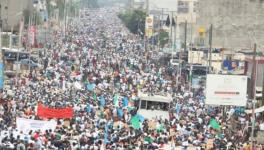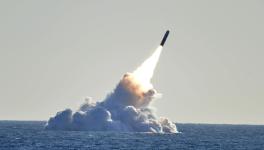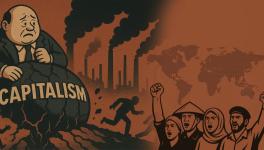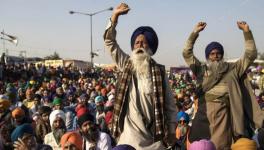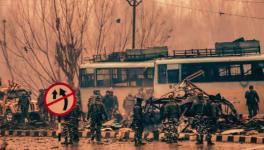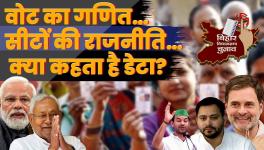50 Years of Vietnam’s Victory

National Liberation Front of South Vietnam also known as Viet Congo, in 1968. Photo: Wikimedia Commons
In March 1975, US diplomats and other foreign nationals – along with US military collaborators – began fleeing Saigon, the capital of South Vietnam. It had become clear that the advance of the National Front for the Liberation of Vietnam towards the capital was unstoppable.
Images of helicopters frantically taking off from Saigon, carrying the last of the US military and their collaborators, appeared in thousands of newspapers and on television sets around the world. As communist troops entered the Presidential Palace, the South Vietnamese president said he was ready to hand over power, to which the revolutionaries replied, “You can’t hand over what you don’t have.”
The withdrawal of most US troops during the previous months had revealed that the ability of the South Vietnamese troops (still logistically supported by the US and its allies) to engage the revolutionary forces was minuscule.
The victory was possible because popular support for the troops of the Liberation Front and the Armed Forces of the Democratic Republic of Vietnam (the North Vietnamese Army) was massive. By April 30, 1975, Saigon was liberated and the process of reunifying Vietnam began under the leadership of the victors. This marked the end of the Vietnam War, one of the most important conflicts in the history of the 20th century and one of the most historically relevant on record.
A millenary history of anti-imperialist struggles
The world was stunned as the Vietnamese achieved what many thought an impossible dream: defeating the most powerful army in history – the US military. But the truth is that Vietnam’s own history offers the clearest explanation for its ability to resist and win.
For several centuries, the Vietnamese were dominated by the powerful Chinese dynasties, which left an indelible mark on their culture. But in the 10th century, Ngô Quyền led a series of struggles that allowed the Chinese Empire to be forced to recognize their autonomy for almost nine centuries. The Battle of Bach Dang River is recognized to this day as a key milestone in Vietnam’s history.
Similarly, during the Mongol conquest campaigns of the 13th century, the Vietnamese dynasties managed to defend themselves with astonishing success. After a brief reconquest by the Chinese, Vietnam regained its independence following the rise of the Lê dynasty. The Chinese dynasties, always hungry for the fertile Indochinese lands, promoted several civil conflicts (one of them lasted almost a century).
The European colonial expansion of the 19th century, which was vilely agreed upon by the European powers of that time, made France, at first, support one of the Vietnamese sides in the dispute, to later invade the then-named Indochina. Thus, almost nine centuries of almost uninterrupted independence ended. The French imposed a political, economic, and cultural system thanks to the brutality of European weapons. The long list of atrocities committed by the French in Vietnam, based on racist and imperialist criteria, would not fit in this article.
But the Vietnamese had not forgotten their history of foreign insubordination. Several nationalist and anti-imperialist movements emerged strongly during the 20th century. Pan Boi Chau, Phan Chu Trinh, and Ho Chi Minh were some of the leaders who, from different ideological perspectives, fought against French colonialism and against the Empire of Japan, which during World War II conquered Indochina and plundered its resources.
After the Japanese occupation, the communist Ho Chi Minh became the leader of Vietnamese independence. During nine years of bloody war, the Vietnamese fought against the French troops, who were crushed in the famous battle of Dien Bien Phu. However, the Western powers, fearful of the advance of communism in the region, decided to split the country in two (the usual strategy of imperialism, as happened in Korea).
Thus, South Vietnam was born, a country governed by puppets servile to the Western powers, and North Vietnam, governed by the Communist Party of Vietnam and supported by the USSR and China. North Vietnam requested a referendum for the Vietnamese people to decide on their possible reunification. When the US and France realized that the people would massively support reunification under Ho Chi Minh’s leadership, they canceled that possibility in 1956.
The War of Resistance against the United States
Thus, the United States gradually began to send soldiers disguised as “military advisors” to reinforce the former imperialist positions and stop an imminent reunification. The famous “Pentagon Papers” would prove years later that the United States had been involved in Vietnam since 1945.
In 1957, South Vietnamese communist guerrillas and North Vietnamese troops took up arms to reunify the country. They strengthened supply routes, the most famous of which was the Ho Chi Minh Road through Laos. By 1963, reunification seemed imminent. So, the United States staged a false flag operation in the Gulf of Tonkin in 1964 to justify sending massive troop deployments to Vietnam in 1965.
In this way, almost 600,000 US soldiers were sent to Vietnam throughout the conflict to confront the communist guerrillas of the Liberation Front, while the US Air Force bombed Vietnam in a bloody and disproportionate manner. According to some records, the US dropped 7.5 million tons of bombs on Vietnam, Laos, and Cambodia, far in excess of the total tons used during World War II by all sides. To this day, there is no record of such massive bombing as that carried out by the United States in Indochina. In addition, the sustained use of chemical bombs such as Agent Orange and napalm was used indiscriminately, which continues to wreak havoc on many Vietnamese to this day.
It is estimated that one million Vietnamese communists died during the conflict, compared to the 300,000 casualties of the South Vietnamese army and 58,000 deaths reported by the US army. The numbers lead to only one possible conclusion: the Vietnamese revolutionaries won despite the casualties, which shows a huge armed contingent that had only one possibility: win or die. Ho Chi Minh explained this curious phenomenon with a phrase that became famous: “You will kill ten of us, we will kill one of you; but in the end, you will tire first.”
Vietnamese guerrilla tactics developed thanks to enormous popular and international support, supply routes, tunnels, traps, lightning attacks, etc., proved to be profoundly resistant to the enormous technological power of the United States. During nine years of subjugation of the local population, the US army never found a way to bend the will of the Vietnamese people, who, in general terms, supported the communist troops and detested the foreign occupation.
The My Lai massacres, in which US troops killed more than 700 men, children, and women (who were raped before being massacred), or the painful images of children with their skin melted by bombs, were some of the most recognized examples by the local population that provoked a generalized rejection of the US presence. Thus, the Pentagon even considered bombing Indochina with nuclear warheads, a proposal that was beyond absurd because of the almost certain nuclear response from the USSR.
However, the atrocities of the US military also began to provoke rejection internationally, even within the United States. Many in the US understood less and less what the meaning of the war was. In 1971, a report by Vietnam War veterans was presented in Detroit that stated that torture and terror were not isolated methods, but part of a premeditated war strategy. Many stopped seeing the war as a fight for democracy and the rights of the Vietnamese, as announced by the official propaganda of the US government.
Hundreds of thousands marched through US cities demanding an end to the draft and the war. Outside the United States, solidarity with the Vietnamese people sparked nationalist uprisings in several countries and the development of an anti-imperialist consciousness that left a mark on the revolutionary struggles of the 1970s.
In 1973, during the Paris Peace Accords, US military leaders publicly concluded that they were incapable of military success. This is an elegant and propagandistic way of saying that they were defeated in a bloody war by historically indomitable people.
Vietnam after the war: a history of economic and social development
After the war, the country was devastated. Some historians estimate that nearly 5 million people died during the nine years of occupation, most because of US bombings. More than three million people were left sick (many with malformations, which were passed down to their children) from the chemical weapons that were unleashed on the civilian population. There are still thousands of tons of explosives that have not yet been detonated and that cause painful incidents (deaths and injuries) every year. After the war, trust had to be rebuilt between the North Vietnamese and the Vietnamese who sympathized with the South Vietnamese government.
Yet, despite the challenges of overcoming the deep scars of war, 50 years later Vietnam stands tall.
Education
The advances since independence from France and the victory over the United States are undeniable. In 1945, 95% of Vietnamese could not read and write. By 2018, the literacy rate reached 95%. Today, Vietnam ranks among the top 20 countries worldwide in PISA exams for secondary school students, a reflection of the strength of its public, tuition-free educational system.
Healthcare
In terms of healthcare, Vietnam was a country that had few hospitals. By 2025, 95% of its population will have free quality coverage. In 1975, life expectancy was 58 years; by 2025, on average, Vietnamese people are expected to live 76.04 years. Health development seems to continue in leaps and bounds: in 2010, Vietnam reported that it had about 101,573 hospital beds; By 2020, that number rose to 142,229.
Infrastructure
Likewise, the Communist Party of Vietnam has been very interested in the development of roads, airports, and digital infrastructure as a key condition for developing the country’s economy, which has profoundly changed people’s daily lives, although challenges remain, especially in rural areas. According to some reports, investment in infrastructure increased by 40% in recent years to face the decrease in exports to the US.
Economic growth
The United States decided to maintain a trade embargo to suffocate the Vietnamese economy. However, by 1993, Bill Clinton decided to lift the embargo due to the economic potential that Western businessmen saw in the Asian country. Indeed, Vietnam took off economically after a painful economic recovery, going from being a purely agricultural economy without technological development to one oriented towards the export of manufacturing and highly technological agricultural exports. Large companies such as The North Face, Adidas, and Salomon have huge industrial parks in Vietnam, making this country one of the territories with the greatest foreign investment on the planet. Today, Vietnam competes with China in the export of rice, which says a lot about its agro-export capacity.
This and other things explain why Vietnam has had significant and sustained economic growth, reaching 5.4% GDP growth every twelve months. The per capita income was USD 100 in 1980; for 2023, it stood at USD 4,300. Furthermore, the number of people unemployed is very low, approximately 4.5%. Historical inflation is quite low, standing at 3.2% on average over the last 10 years.
Vietnam is one of the most desired tourist destinations in Southeast Asia, which is reflected in the number of visitors: in 2000, 1.8 million people visited the Asian country; By 2025, that number will reach 18 million, surpassing, for example, countries that are very attractive to tourists like Singapore.
From victory to progress
The most important question is how a country devastated by foreign invasions (Japanese, French, and US) and their consequent wars had such significant economic development? The most accepted answer is that the centralized administration of the Communist Party of Vietnam, together with the economic reform in the eighties – something like the Chinese reforms with relevant variations – caused an economic takeoff and an accelerated development of living conditions in 50 years (something unprecedented in the history of the country and most countries).
Furthermore, the state has overseen health, education, and security, which has significantly improved the living conditions of the vast majority of the population. Foreign investment, in addition, is controlled by the state, which allows it to direct its economy and plan it according to the changing needs of the country. These data are not minor in terms of the history of insubordination and rebellion of the Vietnamese people, who in their independence have demonstrated an authentic capacity for innovation and progress that has not yet reached a limit.
Courtesy: Peoples Dispatch
Get the latest reports & analysis with people's perspective on Protests, movements & deep analytical videos, discussions of the current affairs in your Telegram app. Subscribe to NewsClick's Telegram channel & get Real-Time updates on stories, as they get published on our website.









